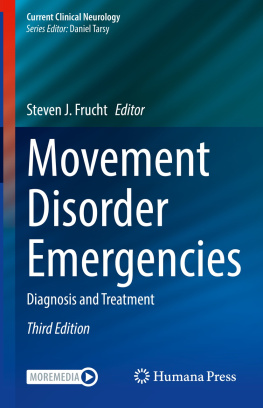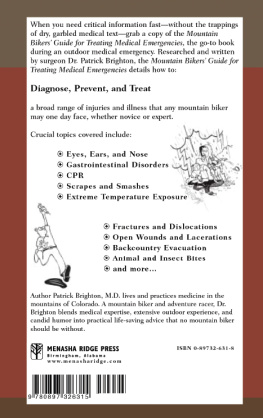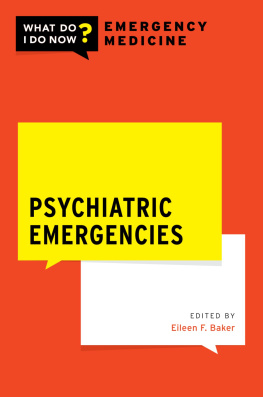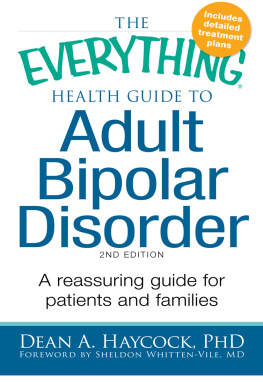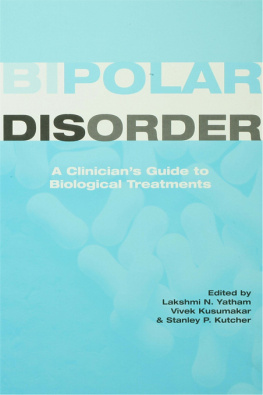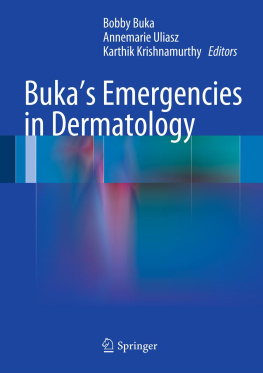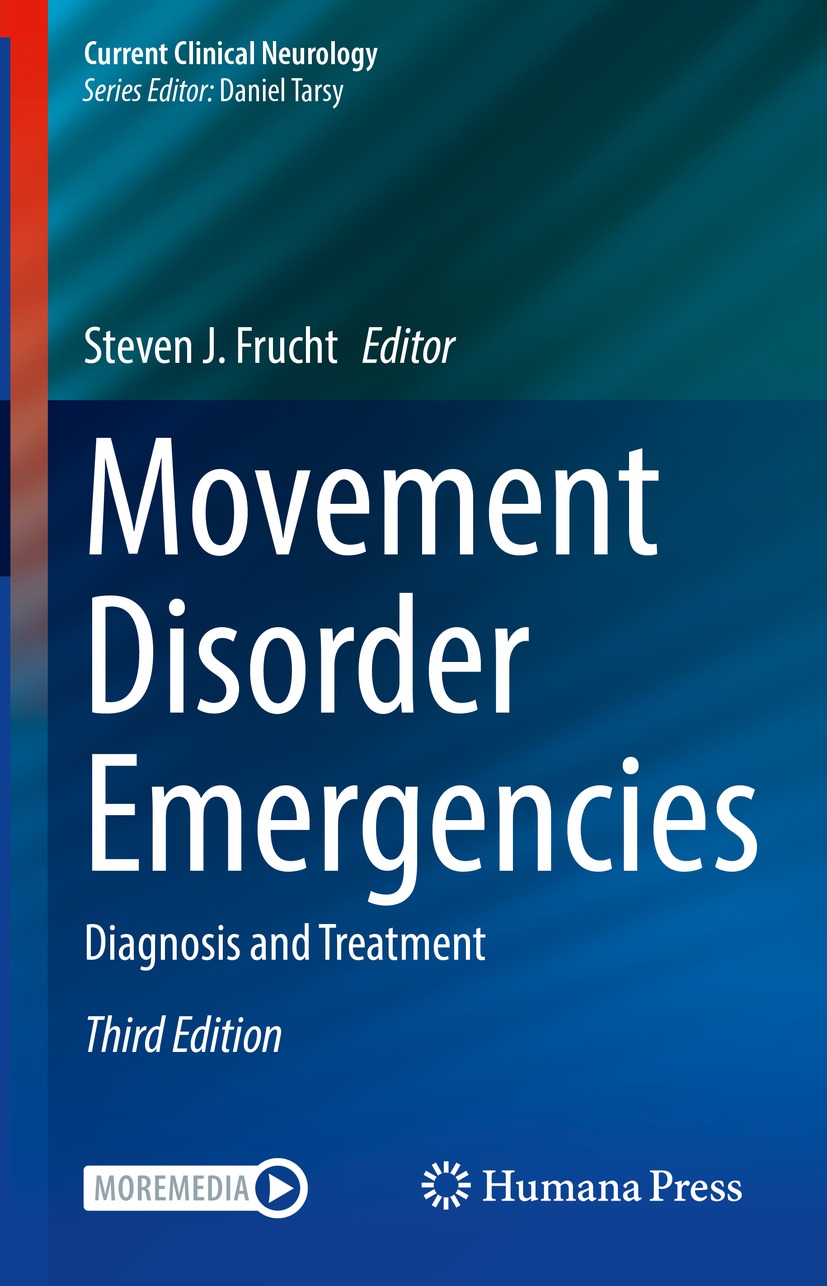Current Clinical Neurology
Series Editor
Daniel Tarsy
Beth Israel Deaconness Medical Center, Department of Neurology, Boston, MA, USA
Current Clinical Neurology offers a wide range of practical resources for clinical neurologists. Providing evidence-based titles covering the full range of neurologic disorders commonly presented in the clinical setting, the Current Clinical Neurology series covers such topics as multiple sclerosis, Parkinson's Disease and nonmotor dysfunction, seizures, Alzheimer's Disease, vascular dementia, sleep disorders, and many others. Series editor Daniel Tarsy, MD, is professor of neurology, Vice Chairman of the Department of Neurology, and Chief of the Movement Disorders division at Beth Israel Deaconness Hospital, Boston, Massachusetts.
More information about this series at http://www.springer.com/series/7630
Movement Disorder Emergencies
Diagnosis and Treatment
3rd ed. 2022

Logo of the publisher
Editor
Steven J. Frucht
Department of Neurology, NYU Langone Health, New York, NY, USA
ISSN 1559-0585 e-ISSN 2524-4043
Current Clinical Neurology
ISBN 978-3-030-75897-4 e-ISBN 978-3-030-75898-1
https://doi.org/10.1007/978-3-030-75898-1
Springer Nature Switzerland AG 2022
This work is subject to copyright. All rights are reserved by the Publisher, whether the whole or part of the material is concerned, specifically the rights of translation, reprinting, reuse of illustrations, recitation, broadcasting, reproduction on microfilms or in any other physical way, and transmission or information storage and retrieval, electronic adaptation, computer software, or by similar or dissimilar methodology now known or hereafter developed.
The use of general descriptive names, registered names, trademarks, service marks, etc. in this publication does not imply, even in the absence of a specific statement, that such names are exempt from the relevant protective laws and regulations and therefore free for general use.
The publisher, the authors and the editors are safe to assume that the advice and information in this book are believed to be true and accurate at the date of publication. Neither the publisher nor the authors or the editors give a warranty, express or implied, with respect to the material contained herein or for any errors or omissions that may have been made. The publisher remains neutral with regard to jurisdictional claims in published maps and institutional affiliations.
This Humana imprint is published by the registered company Springer Nature Switzerland AG
The registered company address is: Gewerbestrasse 11, 6330 Cham, Switzerland
For Rachel, Emma, Clare, and Lucy
Preface
Fifteen years have passed since the publication of the first edition of Movement Disorder Emergencies. In this time, what first seemed an unusual and esoteric topic has become mainstream. Teaching courses on movement disorder emergencies are a regular feature of the American Academy of Neurology and International Movement Disorders Congress annual meetings, and the literature devoted to these rare but important topics has significantly grown.
In this third edition, all of the chapters have been revised and updated, and a number of new authors were added based on their expertise. We modified the organization of the chapters to better serve the practicing clinician, beginning with a practical approach to the patient, hyperacute emergencies, acute emergencies, emergencies of recognition (diagnostic pitfalls), and practical risks in the clinic (pitfalls in management). Key teaching points (shown with a key) and important lessons (shown with a lightning bolt) appear throughout each chapter. As before, videos are an indispensable resource, and the video segments accompanying 20 of the chapters have been expanded and are now available online. New chapters have been added, including discussion of the approach to the movement disorders patient in the emergency room and intensive care unit, neuro-ophthalmologic evaluation in movement disorders, posthypoxic myoclonus, X-linked adrenoleukodystrophy, and an unusual presentation of Wilsons disease.
We wish to thank Diane Lamsback for her enthusiasm, meticulous attention to detail, and indispensable effort in bringing this latest edition to fruition. We also thank the patients and their families who generously gave permission for publication of their videos. Finally, three young co-authors died tragically between the publication of the second edition and the present version. Dr. Jessica Panzer, Dr. Daniel Schneider, and Dr. John Lynch were highly skilled, compassionate clinicians whose contributions to patient care, education, and research will be sorely missed.
We dedicate this third edition to their memory.
Steven J. Frucht
New York, NY, USA
Series Editor Introduction
Daniel Tarsy
Welcome to the third edition of Movement Disorders Emergencies. Diagnosis and Treatment edited by Steven J. Frucht. The first and second editions were published by Springer in 2005 and 2013, respectively, and have been very well received. Both filled an important niche in the knowledge base of clinical neurologists who see most of their patients in the outpatient clinic or hospital emergency room.
The number of chapters has increased from 20 to 28 between the first two editions to 32 chapters in this new third edition. All previous chapters have been updated and revised, and important teaching points have been highlighted in many of the chapters. Patient videos continue to be available on the Springer website for nearly all of the chapters. New chapters by new authors which have been added in this volume include Neuro-ophthalmologic Evaluation in Movement Disorders, Movement Disorder Emergencies of the Upper Aerodigestive Tract, Posthypoxic Myoclonus and its Management, Tic Emergencies, Coprolalia and Malignant Phonic Tics, Startle Disorders, Functional Movement Disorders, X-linked Adrenoleukodystrophy, and Genetics and Genetic Counseling.
As previously emphasized by Dr. Frucht, emergencies have not only been defined in these volumes by the acute and serious nature of the disorders being described but also by the extreme rarity of many of these disorders which usually and even typically delays diagnosis and often regrettably results in a diagnosis of psychogenic or functional movement disorder born largely out of ignorance and lack of experience in the clinician asked to make a diagnosis in such cases. Once again, the neurologic community at all levels owes a large debt of gratitude to Dr. Frucht for his diligence in continuing to bring this topic to the attention of all of us.
Contents
Part IPractical Approach to the Patient with a Movement Disorder Emergency
Pichet Termsarasab
Jenna Conway , Meagan D. Seay and Janet C. Rucker
Thomas Stewart , Lesley F. Childs , Scott Rickert , Boris Bentsianov , Ajay E. Chitkara , Anthony Cultrara and Andrew Blitzer
Part IIHyperacute Movement Disorder Emergencies
Umer Akbar , Hubert H. Fernandez and Joseph H. Friedman

